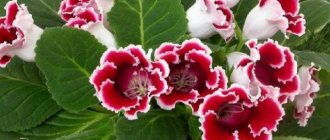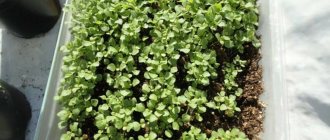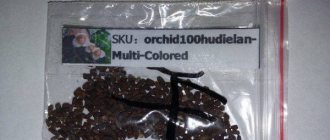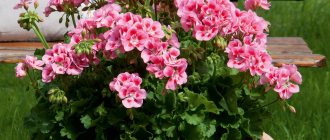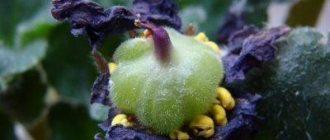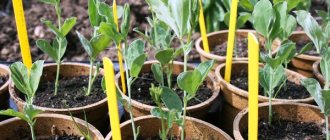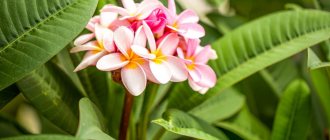Bluebell or "Campanula" is a beautiful flower that is often used to decorate gardens, and especially alpine hills. The name of the plant is telling; the shape of the flower really looks like a bell. There are annual, biennial, perennial plants, low-growing, medium-growing, tall. In addition, there are blue, blue, white, and purple flowers. The most popular type is the Carpathian bell, as well as double, Californian, medium, peach-leaved, crowded and many others. Thanks to such a variety of species and varieties, every gardener will be able to find his ideal flower. The easiest way to get a beautiful flower on your site is to grow a bell from seeds; agricultural technology is not complicated.
Brief information about the plant
The bell got its name because of its resemblance to a bell. There is a legend that the first church bell was created thanks to a flower. A long time ago, a priest heard the quiet rustling of a bell and decided to recreate its shape.
From time immemorial, the plant has been considered a talisman of goodness, capable of warding off evil spirits.
Based on the height of the stem, bells are divided into:
- Undersized . They can be very tiny - 6 cm, or taller - 20 cm.
- Medium height . Their height does not exceed 1 m.
- Tall . Their stem is higher than 1 m.
Bells can be either annual or perennial. Annual plants reproduce by seeds, biennials by seeds or cuttings, perennials by cuttings or parts of rhizomes. If you use seeds to grow perennial varieties, the plant may not retain the varietal trait. Terry varieties are propagated vegetatively; they do not set seeds.
Description
The length of the flower itself does not exceed 7 cm. Its shape resembles an inverted glass. The edges are curved outward. The color can be very varied. The surface is smooth or terry.
Flowers can be collected in inflorescences or single-growing. The ripe fruit resembles a box. Several slot-like holes are visible on it. As soon as the boxes formed on the bell acquire a brown tint, they are cut off and placed in a ventilated, dry room to ripen. This way you can get high-quality seeds of your favorite plant.
In Latin the flower is called "Campanula", which means bell. In common parlance, the plant is often affectionately called bells, shuttles and chenilles.
Varieties
Low-growing varieties are often planted along the border. They love sunny areas with sandy soil. Low-growing varieties are also called dwarf varieties. The most common ones include:
- Carpathian . It has a stem without leaves, up to 30 cm in height. The plant is perennial, grows in the form of a bush. Blooms for 2 months. Primary colors: blue, purple, white. Loves loose, moist soil. The disadvantages include slow growth. Under favorable conditions it blooms in the third year.
- Birch-leaved . Its leaves resemble birch foliage. The stem is not high, up to 15 cm. The leaves are glossy, the flowers are white. It blooms for more than two months. The plant is perennial and requires protection from the cold in winter. Birch leaf bells are often used to decorate borders, flower beds, and alleys.
Higher grades include:
- Pale ocher . The stem reaches a height of 70 cm. It blooms all summer. The inflorescence resembles a spikelet in appearance. It should be planted on slightly alkaline soils. It is better to choose well-lit areas.
- Perforated . Up to 30 cm in height. The inflorescences are loose, the shape of the flower resembles a star. Blooms blue all summer.
- Spot . The stem is 50 cm high. The leaves are large, egg-shaped. There are up to 5 large flowers on one stem. In winter it requires shelter.
- Milky-flowered . This is the largest representative of the species. Instances reach a height of 80 cm, and an adult plant can grow up to 2 m. The flowers are small, white, about 3 cm, collected in inflorescences. The plant blooms all summer.
Reproduction
Along with the seed seedling method, there are other options, the use of which depends on the biological characteristics of the variety and plant type. So, if one-year-old bells reproduce by seeds, then two-year-old bells prefer vegetative ones (by seeds and cuttings).
Species of perennials with taproot and carpal root systems are considered vegetatively immobile and can reproduce by their seeds. Plants with creeping long roots, classified as vegetatively mobile species, tolerate all these methods + bush division well.
However, it is better to propagate perennial flowers:
- parts of rhizomes,
- root cuttings,
- stolons,
- dividing the bush.
Despite the possibility of seed reproduction, these species lose their generic characteristics. This is especially reflected in double varieties, which even lose their ability to produce seeds.
With the vegetative method, cuttings are prepared in the spring. From early March to mid-April, they are cut from young basal or stem shoots. Then they are planted in a loose substrate and placed in microgreenhouses, under a film to maintain optimal humidity. Within a month, the cuttings begin to grow roots, after the development of which, you can begin planting the plant.
The use of propagation by dividing the bush is permissible after 2-3 years of plant life. To do this, in May-June, a large bush is selected, dug up, and the above-ground stems are cut off.
Dividing the bush into parts is carried out with a sterile, sharp garden knife. Each part must contain developed healthy roots and renewal buds. The cutting areas of each cutting are treated with crushed coal or ash, and then immediately planted in abundantly watered soil.
When propagating rhizomes in parts, only the creeping part is dug up, from which cuttings from the mother plant with renewal buds are made. They are planted in the ground with an open bud above the soil surface.
Preparing for sowing
To get good and strong seedlings, you should follow certain rules.
When to sow seeds
In order for the plant to bloom in the same year, it is grown by seedlings from seeds in early spring. The best time to plant seeds depending on the region:
- South of Russia - early March;
- Central Russia - mid-March;
- Ural, Siberia - early April.
Seed preparation
Bell seeds are very small and do not require pre-treatment. To increase germination before sowing, they can be treated with a growth stimulator (Epin, Zircon). When using them, you should strictly adhere to the instructions (it is indicated on the packaging), and also monitor the dosage.
What soil to use
Plant the seeds in universal soil for flower seedlings. To improve its structure, you should add sand, perlite, and vermiculite. Ratio 3:1:1:1.
You can also prepare the soil yourself. It includes:
- humus;
- turf land;
- coarse sand.
The proportion is 3:6:1.
What capacity is needed
It is better to use a low, wide container for seedlings. Its depth should not exceed 7 cm. It is worth making drainage holes at the bottom of the container through which excess moisture will escape. It is recommended to disinfect the container before use. To do this, it is treated with a solution of potassium permanganate.
For sowing, it is convenient to use peat cassettes for seedlings - the plant is planted in open ground along with a cup. As it decomposes, it becomes fertilizer.
When to sow bellflower seeds for seedlings, in what month
When is the best time to plant bellflower seedlings in 2022? Since seedlings grow relatively slowly, it is optimal to sow in March and early April . In the South, planting can be done in early March, in the middle zone (Moscow region) - in mid-March, in Siberia, the Urals, Leningrad region it is better to plant in early April.
You can select the planting dates according to the 2022 Lunar calendar:
- Favorable days: in January: 1, 10, 11, 15, 16, 19, 20;
- in February: 7, 8, 12, 13, 14, 15;
- in March: 10, 11, 15, 20, 21, 24, 25.
- Unfavorable days: in January: 2, 18th;
- in February: 1, 16;
- in March: 2, 16, 17, 18, 31.
Sowing work
The process of sowing seeds is not complicated; you should follow the instructions:
- A drainage layer 1 cm thick is placed at the bottom of the container. Perlite or expanded clay can be used as drainage.
- Fill the container with soil. You should not fill it to the brim; it is better to leave 1-2 cm free to the top.
- The soil is moistened with warm, settled water.
- Then surface landing is carried out. The seeds are sown on the ground and lightly pressed down.
- Spray the soil using a spray bottle.
- Cover the top with a transparent lid or cling film. This creates a greenhouse effect.
The optimal air temperature in the room with containers is +20-22°C.
The seeds should be kept under the film until the first shoots. In order for the plant to receive enough oxygen and light, it is necessary to remove the covering material for 30 minutes once a day.
How to care for seedlings
Caring for seedlings is an extremely important stage. If certain rules are not followed, the seedlings may die.
Temperature, lighting and watering
After the seedlings emerge, the containers are placed on a sunny windowsill; the air temperature in the room should be +18-22°C. Recommended daylight hours are 12-14 hours. If there is not enough natural light, it is necessary to supplement the seedlings with phytolamps.
Water the seedlings from a syringe or syringe, pouring water in a thin stream under the root. In this case, you need to make sure that it does not get on the leaves. The soil should always be slightly moist.
How and when to pick seedlings
The plant is picked after the appearance of 2-3 true leaves. For this, use individual containers; a volume of 200 ml will be sufficient. Before transplanting, it is necessary to make drainage holes in them. You can use the same soil that was used for sowing the seeds.
Before picking, water the seedlings and leave for 1 hour. The soil will become softer and the seedlings will be easier to remove.
A drainage layer 1-2 cm thick is placed in new containers, filled with soil and small depressions are made. Carefully move the plant along with the lump of earth. It is better to remove seedlings using a spoon or fork. The bell has long roots that are easily damaged.
After transplanting the seedlings into a new container, the soil is compacted. Water with settled water at room temperature. To protect the plant from unnecessary stress, the seedlings are kept in shaded areas for the first 2-3 days after diving.
Top dressing
The first feeding is carried out 2 weeks after picking. Use complex mineral fertilizer for flowering plants, for example, Agricola. Repeated application of fertilizers is repeated after 10-14 days.
Hardening of seedlings
2 weeks before planting seedlings in open ground, a hardening procedure should be carried out. To do this, open a window in the room for 30 minutes. Every day the time is increased by 1 hour. 1 week before planting, the containers are taken outside for 2 hours, also increasing the time spent on the street every day.
Description
Bluebells are beautiful herbaceous plants belonging to the family of the same name. Breeders have bred more than 300 different types of flowers. The Latin name for perennial bells is “Campanula” (translated as “bell”). Varieties that were specially bred by breeders are characterized by more robust and lush flowering. Their inflorescences are brighter, more colorful and decorative.
The plant in question received its name due to the special shape of the flowers - they are very similar to a classic bell. These flowers like temperate climates. Their growth is rapid, so gardeners very often have to resort to thinning the beds when growing perennial bells.
Only one flower can grow on one stem of the plant in question, but most often these are attractive inflorescences that resemble small tassel-shaped panicles. Flower seeds ripen in neat boxes (from 4 to 6 pieces) with small cracks.
Some varieties have tubular bowls with pointed petals at the top. There are also larger varieties of flowers. Some varieties are characterized by rounded leaf blades at the base of the stem, and lanceolate leaves on the trunk.
As a rule, the flowering stage of perennial bells occurs in the first half of May. This period lasts until mid-July. In a number of subspecies, flowering occurs in the last days of the summer season and ends in September. You can also find varieties that delight you with colorful tassels for 90 days.
Perennial bells are incredibly popular these days. Many gardeners choose them for planting on their plots. The main feature inherent in these perennials is their unpretentiousness. Caring for them is very simple - even a novice gardener without much experience can handle it without any problems. The plant looks gorgeous both in group plantings and on attractive alpine hills or in flower beds and special mixborders.
Planting in open ground
Bells are planted in open ground in warm regions in early May, and in cold regions in early June. Bells love open areas; for planting seedlings, you should choose the sunny side.
Only a few bellflower species do well in the shade. They differ from light-loving varieties in the dark color of their foliage.
Most species prefer neutral or slightly alkaline soil. If the soil is heavy enough, then humus or sand is added to it. Poor soil is enriched with turf soil and various fertilizers. Do not add peat or fresh manure to the soil. They can lead to fungal diseases.
The place for the bells should be away from trees and bushes. Large plants with their roots will take the moisture and nutrients they need from the flowers.
Dwarf species are planted at a distance of 10-15 cm from each other. If the bells are medium-sized, then the distance between them should be about 25 cm. Tall ones are planted at intervals of 50 cm. After planting, the soil is pressed down with your hands and watered with water.
Types, varieties
List of bellflower varieties (the color of the bells is indicated in brackets):
- Gnome (light lilac).
- Blue Numlight (light blue).
- Torpedo (light purple).
- Blue Clips (blue with a purple tint).
- Pearl White (white).
- Pristar (purple).
Carpathian bellflower is one of the species of the genus of bellflowers of the Campanaceae family. It no longer has subspecies. But breeders have bred several decorative varieties. They have the same appearance, flowering time and flower size. The only thing that distinguishes them is the color of the petals. Therefore, to describe the distinctive features of varieties, it is enough to simply indicate the color of the “bells”.
Outdoor care
The bell does not need special care. It only needs to be watered in hot months, remove weeds, and loosen the soil. Tall plants should be tied up. Feed flowers in early spring. Nitrogen fertilizer should be scattered over the melted snow. Fertilizer can be applied a second time when the buds begin to form. Timely removal of wilted flowers will help prolong flowering.
Perennial plants require preparation for frost. To do this, at the beginning of October, all stems are cut off at the root. Cover with dry leaves or spruce branches on top. Tall bells are covered with peat or humus. The height of the shelter must be at least 15 cm.
LiveInternetLiveInternet
—Quote book
TO BE REMEMBERED. FORGOTTEN NAMES - SOVIET STEP PEOPLE AND TAP DANCERS GUSAKOV BROTHERS Soviet st.
New Year's savory appetizer "5 minutes" Savory appetizers.
VERBENA VERBENA Verbena is a beautiful perennial plant - a real gem.
Skirts, skirts, skirts. (with patterns).
Gardener's calendar for 2016. Puxovaia.
—Tags
—Categories
- House (379)
- My experience of growing plants (65)
- Dacha (85)
- Recipes (51)
- Family (122)
- Retro (16)
- Inheritance. Court (3)
- Interior (185)
- Garden design (99)
- interior of small rooms (14)
- Kitchen design (10)
- Bath and toilet design (7)
- bedroom interior (7)
- Design of the hallway, hall (6)
- loggia design (4)
- Children's room interior (4)
- living room interior (4)
- garden, vegetable garden (149)
- FLOWERS (86)
- Vegetables (31)
- Bushes (14)
- Trees (5)
- Health (69)
- DIY (220)
- Religion (44)
- New Testament (18)
- Old Testament (11)
- Links (339)
- Trivia (259)
- Pictures (67)
- Parenting (77)
- Work (7)
- Metro (1)
—Applications
- I am a photographer
Plugin for publishing photos in the user's diary. Minimum system requirements: Internet Explorer 6, Fire Fox 1.5, Opera 9.5, Safari 3.1.1 with JavaScript enabled. Maybe it will work - Postcards
Reborn catalog of postcards for all occasions - Rating buttons "Yandex.blogs"
Adds Yandex rating buttons to the profile. Plus, graphs of rating changes per month will appear soon - Online game "Empire"
Transform your small castle into a mighty fortress and become the ruler of the greatest kingdom in the game Goodgame Empire. Build your own empire, expand it and defend it from other players. B
—Photo album
-I'm a photographer
—Subscription by e-mail
—Search by diary
—Interests
— Regular readers
-Statistics
Diseases and pests
Diseases and pests rarely affect bells. Mostly perennial species that grow in the same place for a long time are affected.
- Harmful bacteria accumulate in the soil over many years. They can lead to the death of the flower. To protect the plant, the soil is treated with a 0.2% solution of Fundazol.
- During prolonged rainy weather, a drooling captive may form on the bells. Get rid of it with garlic infusion.
- Of the pests, bellflowers can be affected by slugs. You can drive them out of the area with a decoction of hot pepper. Superphosphate scattered between the flowers also helps a lot.
If you follow all the rules for growing bellflower seedlings from sowing seeds to planting in open ground, then the plant will delight you with its bright flowering for many years.
Features of growing bells from seeds
The majority of varieties are perennials. However, one- and two-year-old bells are also found. Sexual reproduction is considered not only the most effective method, but also universal. Growing perennial bellflowers from seeds is used as often as biennial ones. For annuals, this is generally the only reliable method of reproduction. This option is not recommended for some terry varieties, in which the seedlings lose the characteristics of the parent plants or the seeds have very poor germination.
If there are already bells on the site, then the seeds are easy to collect yourself. To grow new species, planting material must be purchased.
When collecting seeds, you should not wait until the capsules are opened. It is better to cut off the selected inflorescences when they turn brown. Then put them to ripen.
Important! The room should be well ventilated.
If you miss the collection date, the seeds simply spill out of the boxes onto the ground.


